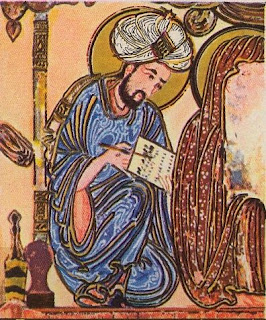The mechanics of eclipses were understood long ago. Babylonians over 3000 years ago had eclipses figured out, and even Isidore of Seville in the 7th century understood the process. (The illustration is a 14th century book showing the phases of eclipses.) Isidore knew that the lunar eclipse would only occur when the Moon was full.
Not everyone knew that this was a predictable and understandable phenomenon, however. A solar eclipse took place on 23 June 1191 in England, and the monk Richard of Devizes commented that those who saw it and did not know what scholars knew thought it was a sign of something ominous. Earlier, a lunar eclipse during the First Crusade showed a blood-red Moon over Jerusalem as the Crusaders approached. It was described as a sign of God's will. (This was reported later by Albert of Aachen, writing a history of an event he did not himself witness. Albert had no compunction against stating that a lunar eclipse portended a defeat for the Crusade's enemies, while a solar eclipse would have meant disaster for the Crusade.)
John of Salisbury warned against using eclipses as signs of future success or failure. Astronomy was fine, but using it to predict the future was as erroneous as soothsaying, astrology, and other such practices.
Bishop Thietmar of Merseburg also proclaimed that eclipses were not caused by evil incantations or the celestial bodies being eaten by demons or monsters. This is the only reference to the idea of the sun or Moon being "eaten" during an eclipse. We can't be sure if anyone really claimed this, or if Thietmar was just exaggerating the fears of the uneducated so that he could counter them.
An eclipse in 756 was described by Simeon of Durham in some detail:
Moreover, the Moon was covered with a blood-red color on the 8th day before the Kalends of December [i.e., November 24] when 15 days old, that is, the Full Moon; and then the darkness gradually decreased and it returned to its original brightness. And remarkably indeed, a bright star following the Moon itself passed through it, and after the return to brightness it preceded the Moon by the same distance as it had followed the Moon before it was obscured.
Simeon seems to be describing the occultation of a star during the eclipse.
John of Salisbury has been mentioned here before, but he said and did a lot that deserves attention. We'll look at him next time.

















